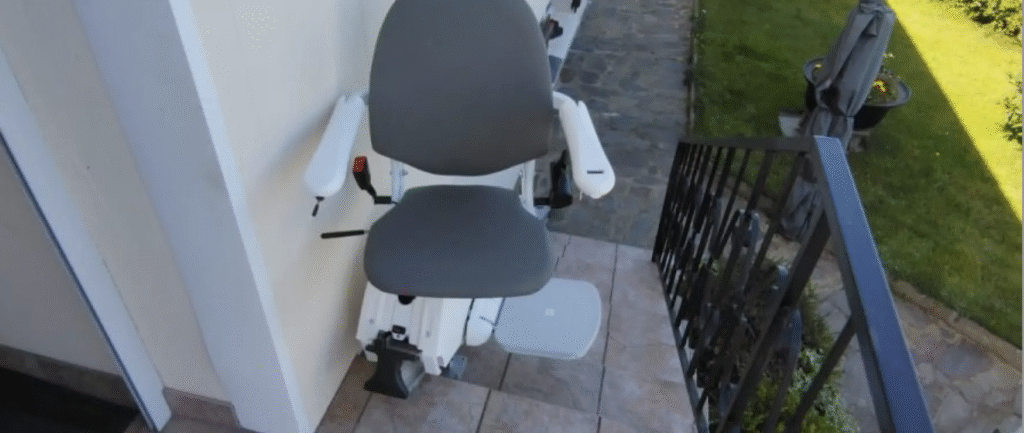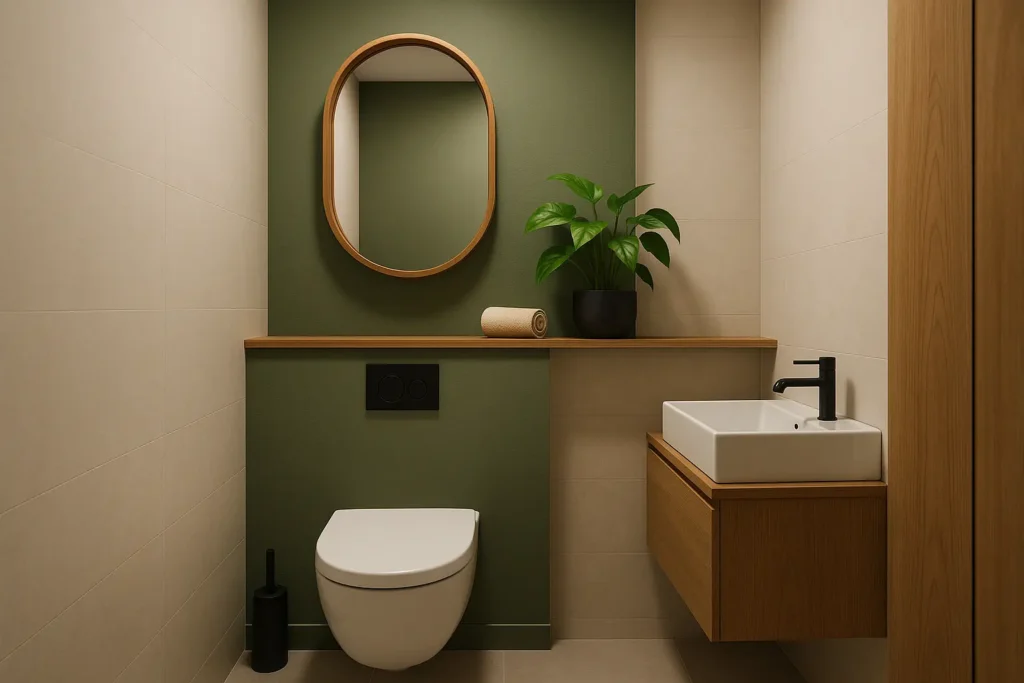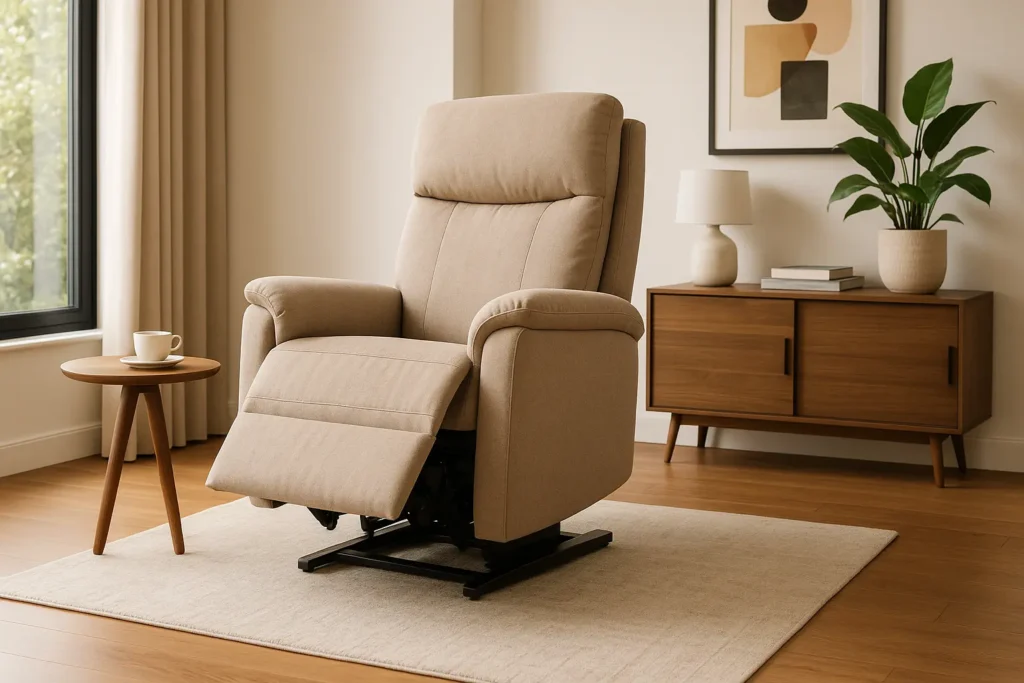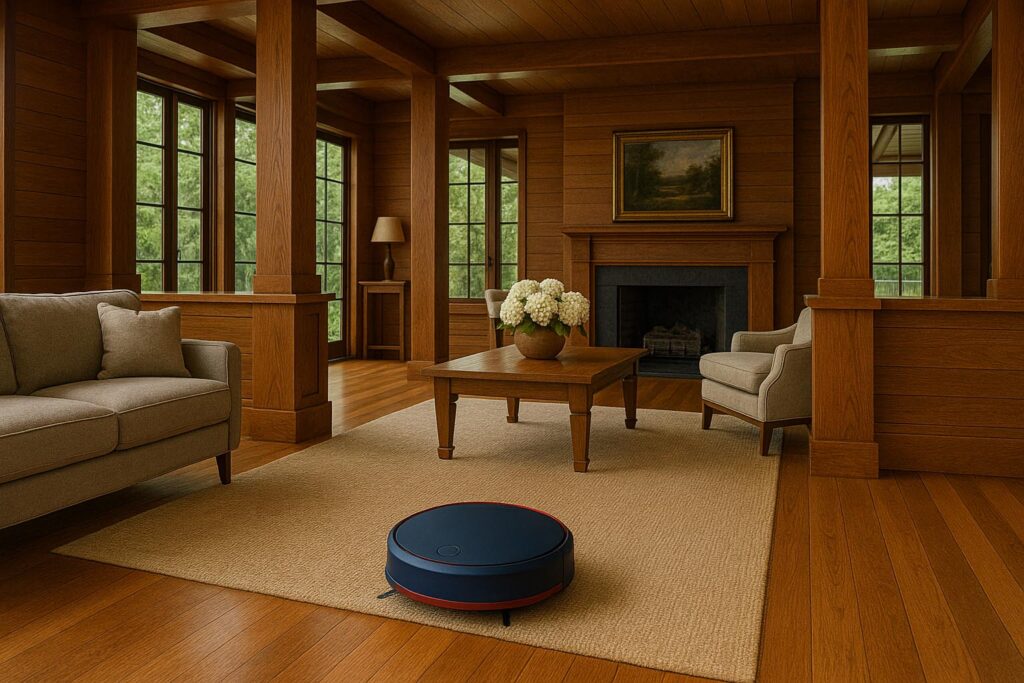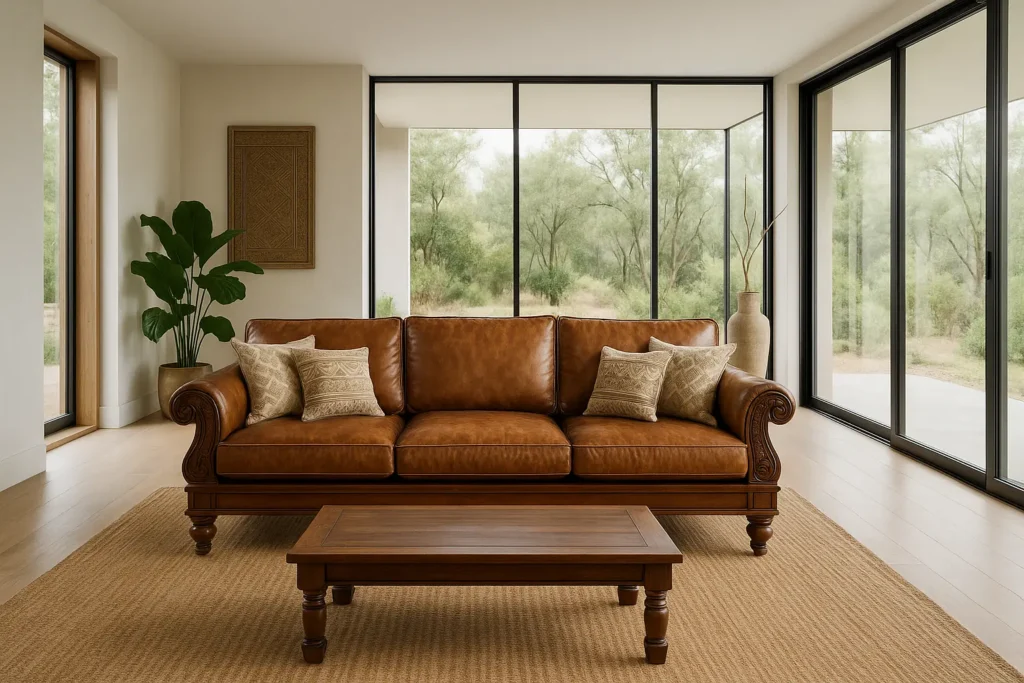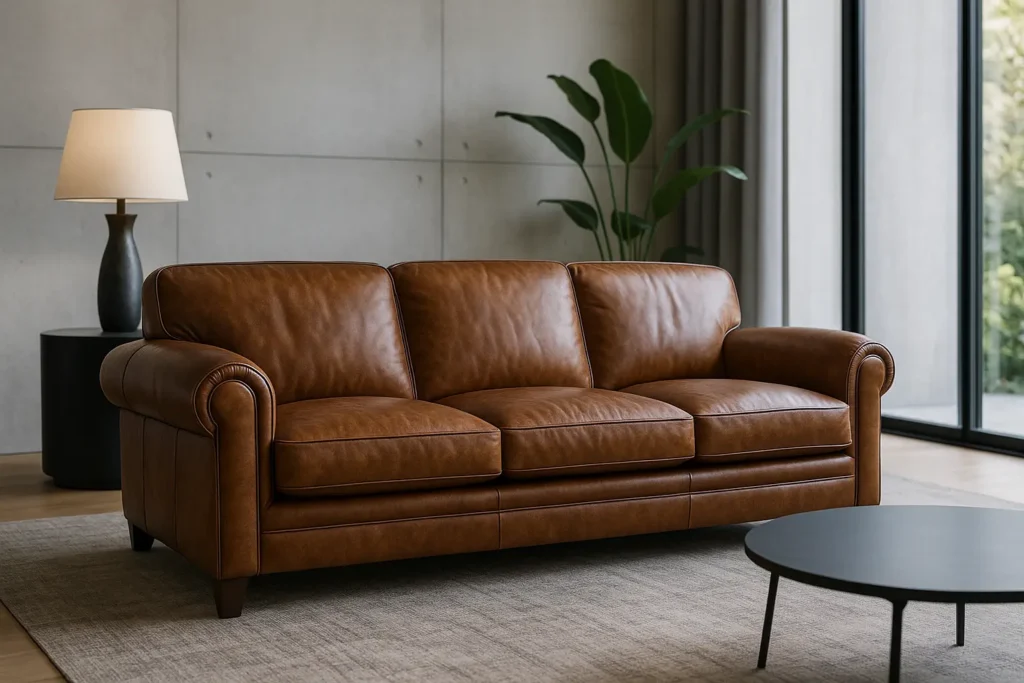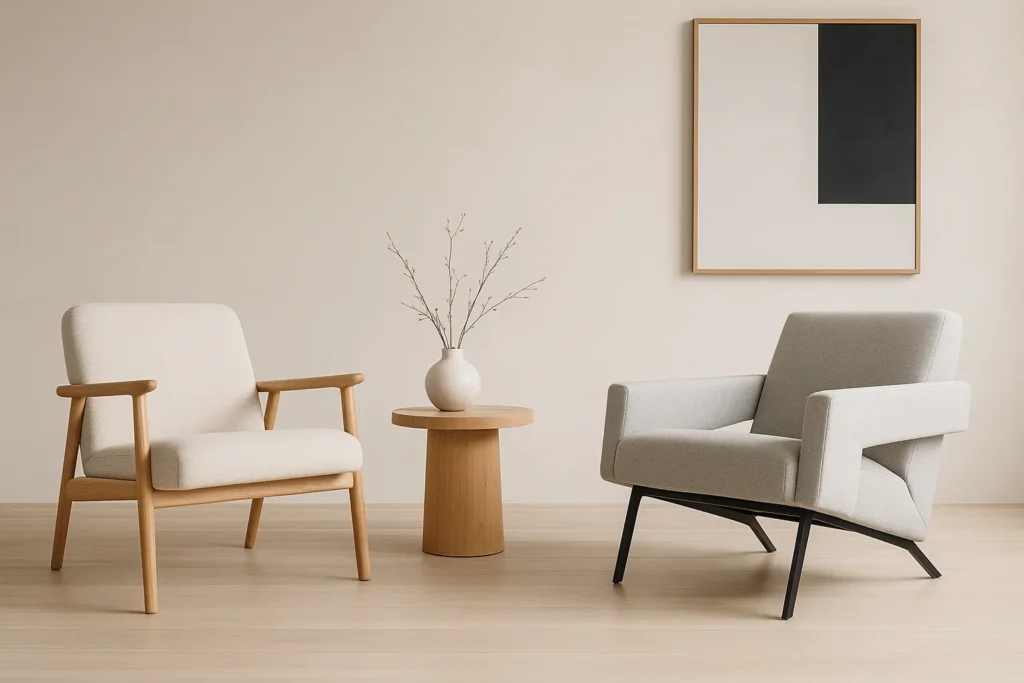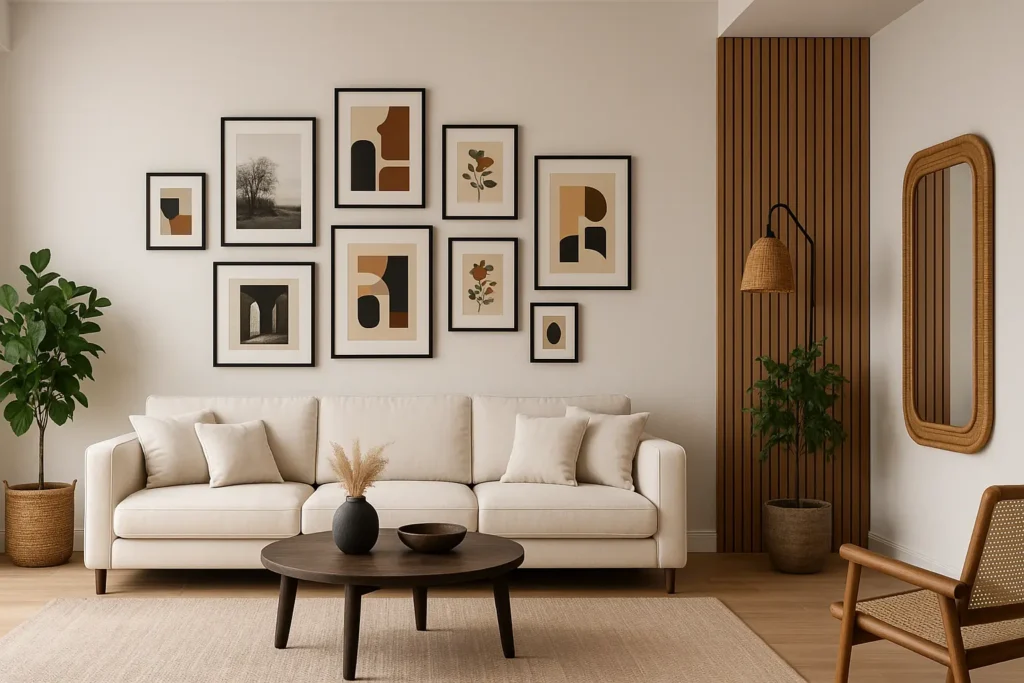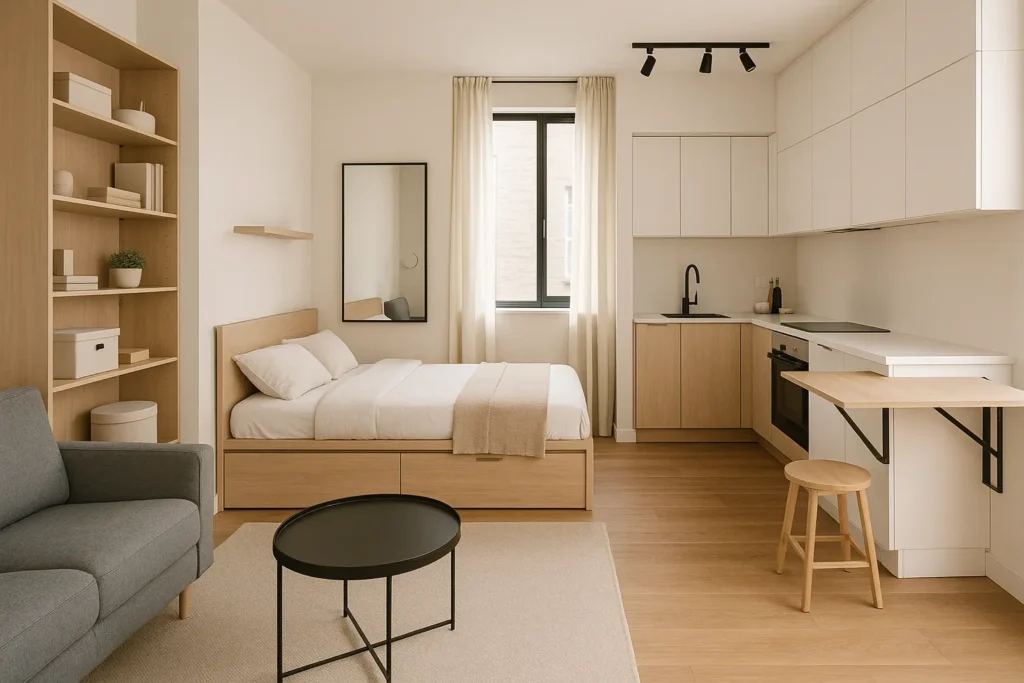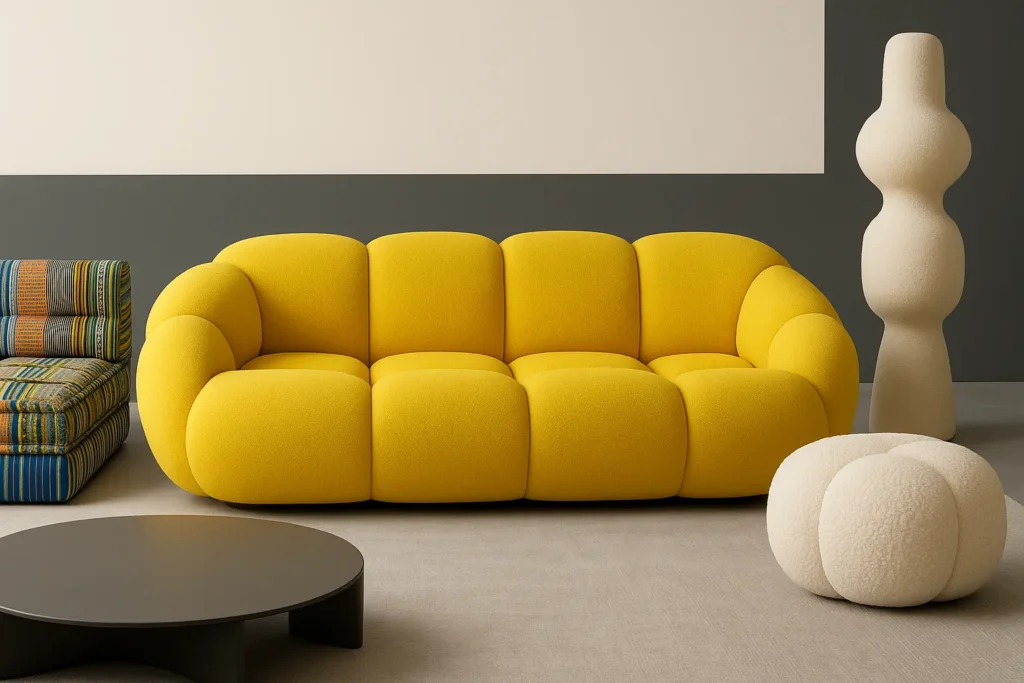Transforming your bedroom with two paint colors can completely transform this intimate space. Over the years, we've seen this two-tone approach gain popularity among our readers who want to create a true personal haven of peace. The right choice of shades directly influences your daily well-being, especially in a space dedicated to rest and rejuvenation. Let's take a look at the combinations that work wonderfully and the techniques for stylishly applying these two colors in your adult bedroom.
Our article in brief:
Transforming a bedroom with two colors creates a space balanced between style and serenity for optimal sleep.
- Warm tones like terracotta energize the space while cold shades soothe and promote relaxation
- THE headboard wall is ideal for accent color, creating a natural focal point
- The association white and color remains timeless, allowing the chosen shade to fully express itself
- THE monochrome create perfect visual harmony for a relaxing space
In this article
The impact of colors on the ambiance of your adult bedroom
The colors that surround you while you sleep are not to be taken lightly. Each hue has its own vibration and influences your mood in subtle but real ways. In our modern and elegant colonial bedroom, we like to play with this psychology of colors to create atmospheres that tell a story.
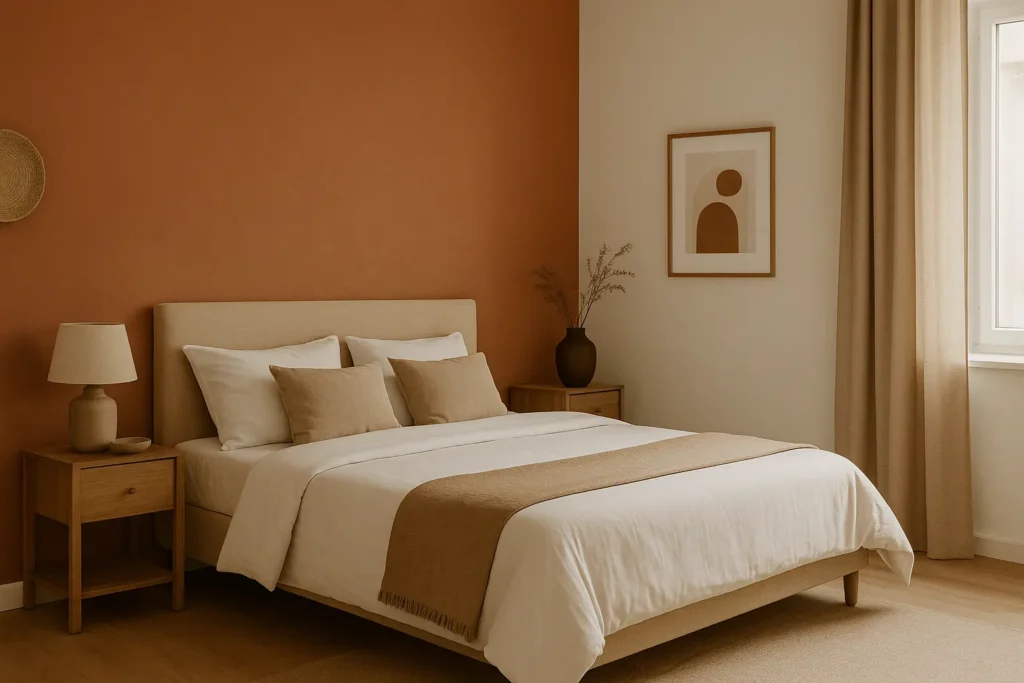
THE warm tones like terracotta or ochre stimulate and energize the space, while cool shades like sky blue or sage green soothe and promote relaxation. The size of your room also determines the shades to favor: light colors visually enlarge, while darker ones create a more cozy and enveloping atmosphere.
The exposure of your bedroom plays a crucial role in the final color rendering. A north-facing room will gain warmth with golden or amber tones, while a south-facing room will be balanced by soft blues or greens. For a master bedroom, we particularly recommend restful shades like sky blue, sea green, sandy beige, or pearl gray, which promote restful sleep.
The ideal color combinations for an adult bedroom
Neutral and earth tones
Pairing a neutral base with an earthy touch instantly creates a warm, natural feel in your bedroom. Imagine an off-white main wall paired with a warm terracotta panel—this combination immediately evokes the Mediterranean interiors we love.
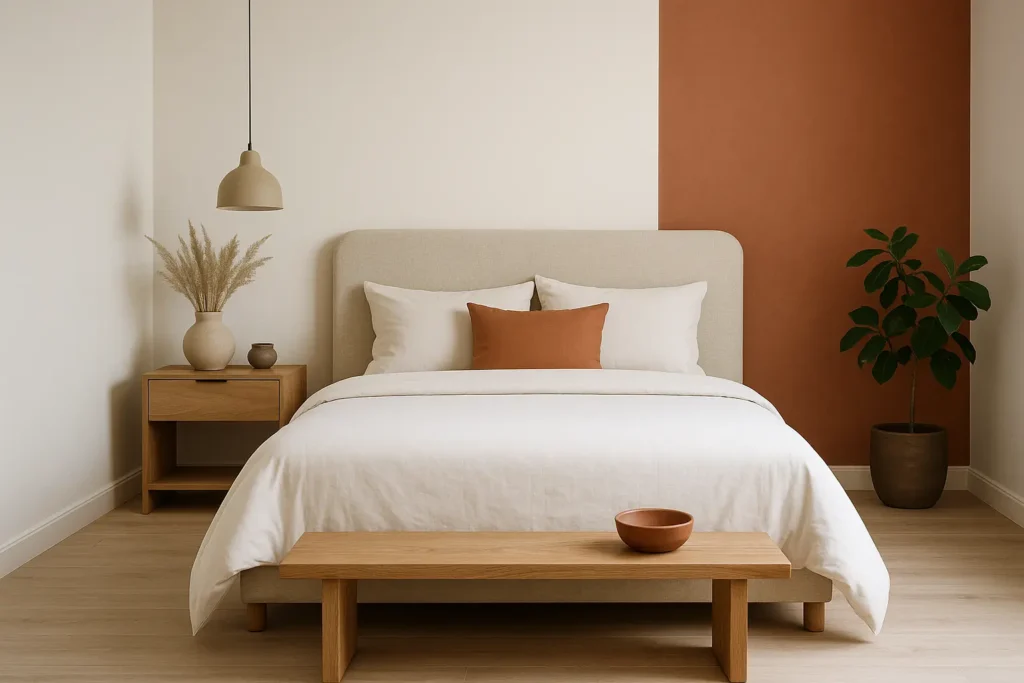
The duo hemp beige and hazelnut brown brings a natural sophistication, perfect for a contemporary master bedroom. For a bolder effect, try light gray paired with khaki green, which transports you to a world somewhere between mineral and plant. These combinations help ground the room while maintaining an airy and bright atmosphere.
Adult bedroom in monochrome and gradient colors
Playing with different intensities of the same color creates instant visual harmony in your bedroom. This monochrome technique adds depth without the risk of being out of style. For north-facing bedrooms, we favor warm color gradients that capture and amplify natural light.
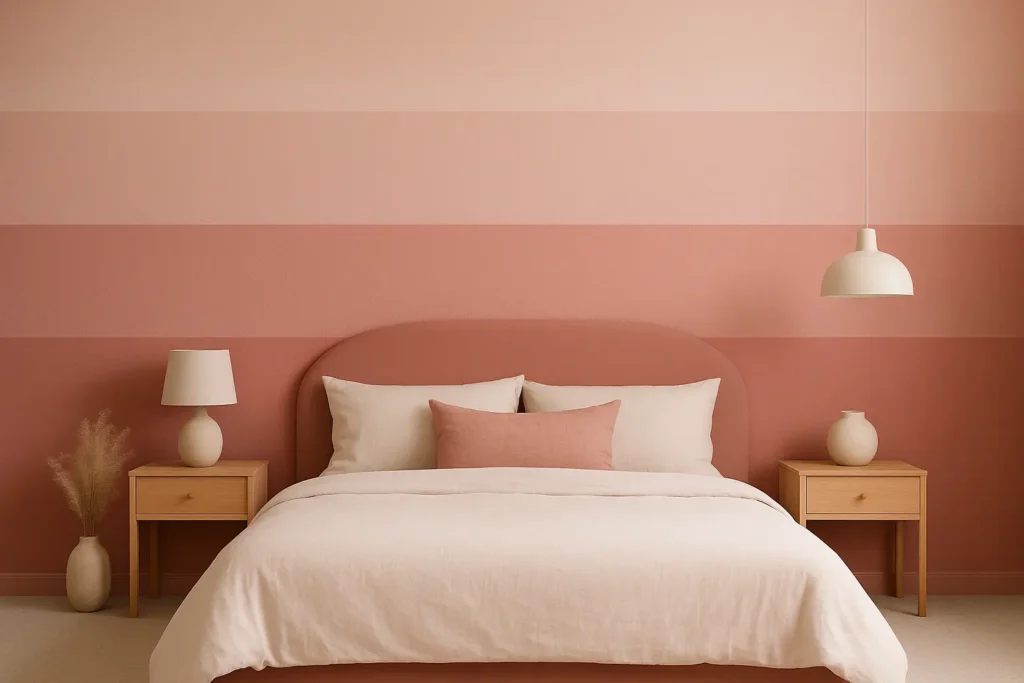
A shades of blue ranging from celadon to duck blue works particularly well for a calming atmosphere. For warm colors, a gradient from powder pink to dusty rose creates an enveloping atmosphere without being overwhelming. The trick is to reserve the most intense shade for the wall that houses the bed, the focal point of the room.
Contrasting associations
For the more adventurous, pairing colors opposite each other on the color wheel can transform an ordinary bedroom into a truly remarkable space. Blue and orange create dynamic visual tension while remaining balanced. Purple and pale yellow work surprisingly well together, especially in their muted versions.
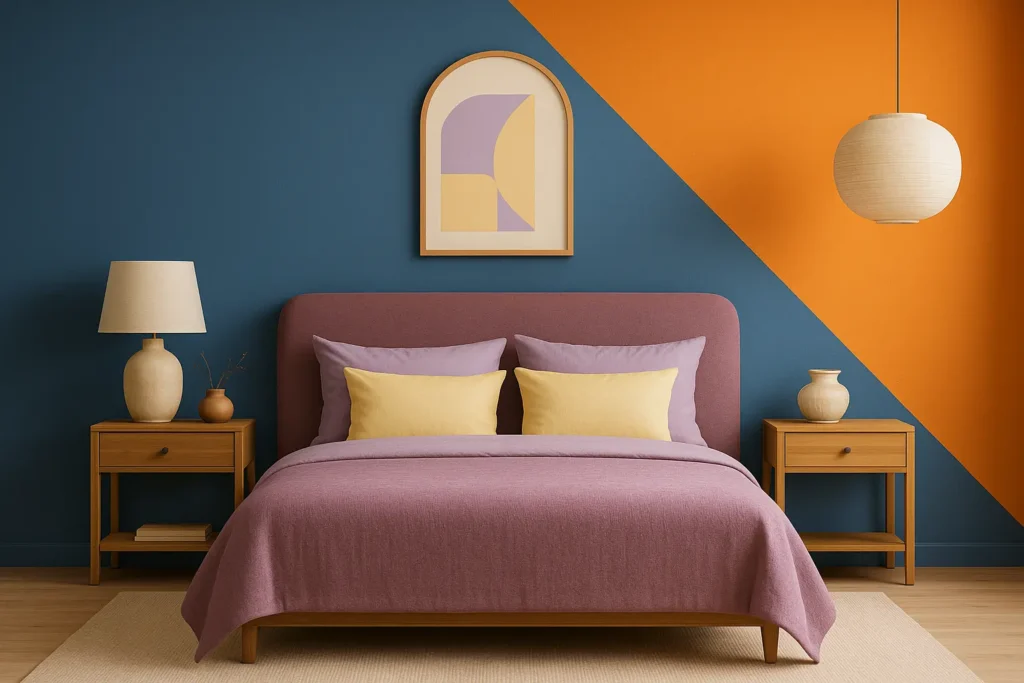
A sage green combined with powder pink Bring freshness and softness to your adult bedroom at the same time. To avoid the "child's room" effect, opt for desaturated versions of these contrasting colors – they will gain sophistication while retaining their invigorating character.
What strategy should you use to paint your bedroom walls?
Choosing which walls to highlight determines the visual balance of your bedroom. The wall that houses the headboard is the ideal location for your accent color or the darkest one. This area, naturally associated with rest, thus becomes the anchor point for the entire space.
| Wall to paint | Desired effect | Recommended combination |
|---|---|---|
| Bed wall | Cocooning and intimacy | Dark color + three other light walls |
| Wall facing the window | Amplify the brightness | Light reflective color |
| Wall perpendicular to the window | Color stability | Intense color without light alteration |
| Attic room | Visual structure | Colored lower part + light upper part |
In a narrow room like a corridor, our painting techniques also adapt to your bedroom. To create a sense of space, paint the back wall a darker shade than the side walls. In attic bedrooms, applying a color to only the lower part of the wall elegantly defines the space without overwhelming it.
White + a color: the timeless combination
White remains the ideal partner for any shade in a master bedroom. This immaculate base structures the space, reflects light, and allows your second color to truly express itself. The duo white and pearl gray creates a contemporary and soothing ambiance, perfect for a minimalist bedroom where the furniture becomes the protagonist.
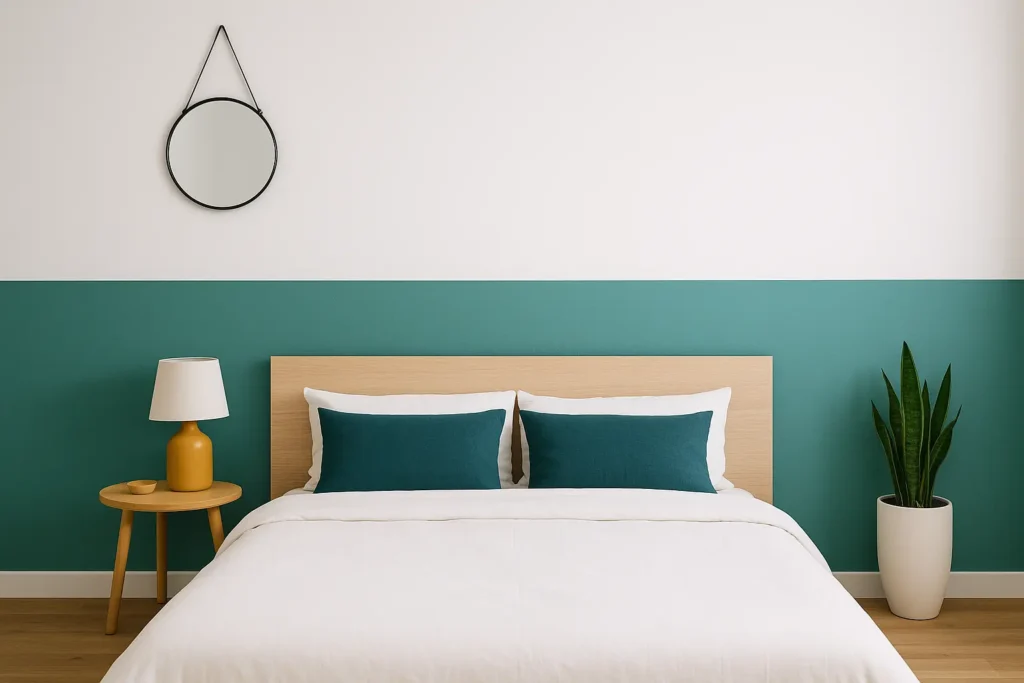
For a more dynamic approach, pairing white with warm colors like mustard yellow or terracotta will infuse the room with energy and character. If you're looking for freshness and serenity, pairing white with duck egg blue or sage green will instantly transform your bedroom into a soothing haven.
The horizontal bipartition technique works particularly well with white: paint the top two-thirds white and the bottom third in your chosen color. This trick makes the room appear more spacious and has higher ceilings—ideal for smaller spaces.
Create thematic room moods with two colors
Sea Escape
The combination of blue and cream instantly evokes the atmosphere of the coastline we love so much. For a seaside-inspired bedroom, opt for a slightly grayish blue rather than a more subtle and sophisticated bright blue. The horizon blue wall behind the bed, combined with the other creamy white walls, creates a soothing setting that invites you on an inner journey.
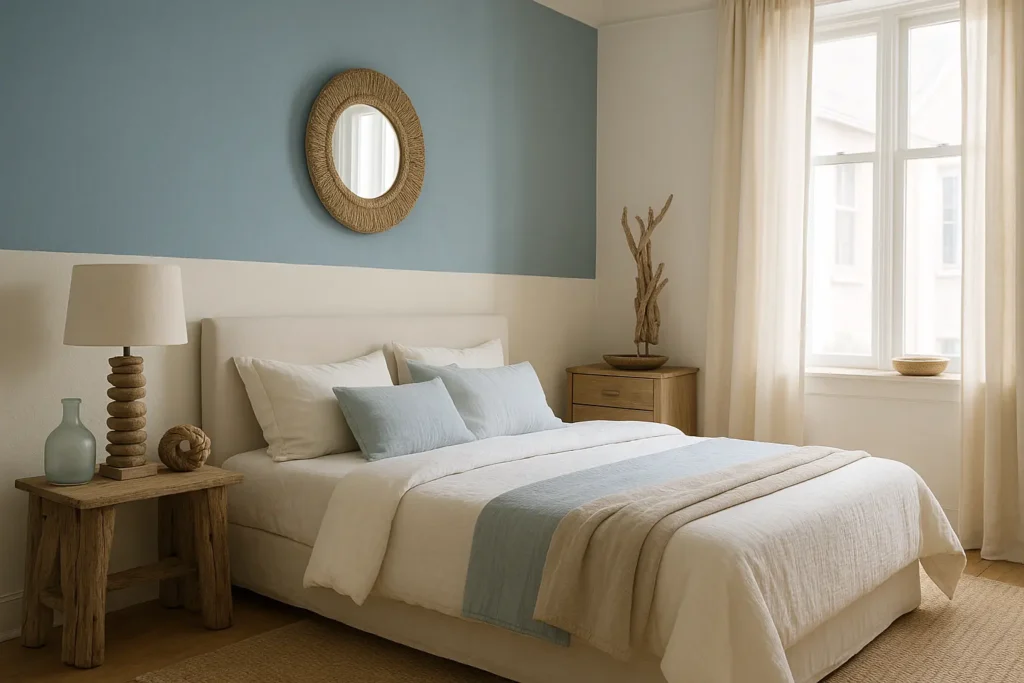
- Complete this two-tone color with driftwood accessories and natural linen textiles to enhance the coastal atmosphere
- Add a few touches of braided rope and frosted glass to evoke marine elements
- Favor soft, diffused lighting that recalls the subdued light of the coasts
- Incorporate objects found during travels to personalize this escape space
Natural immersion
Green combined with light tones like beige or ecru transforms your bedroom into a true natural haven. We recommend a sage green or verdigris for the main wall, complemented by neutral tones for the other surfaces. This combination instantly soothes the mind, like a walk in the forest.
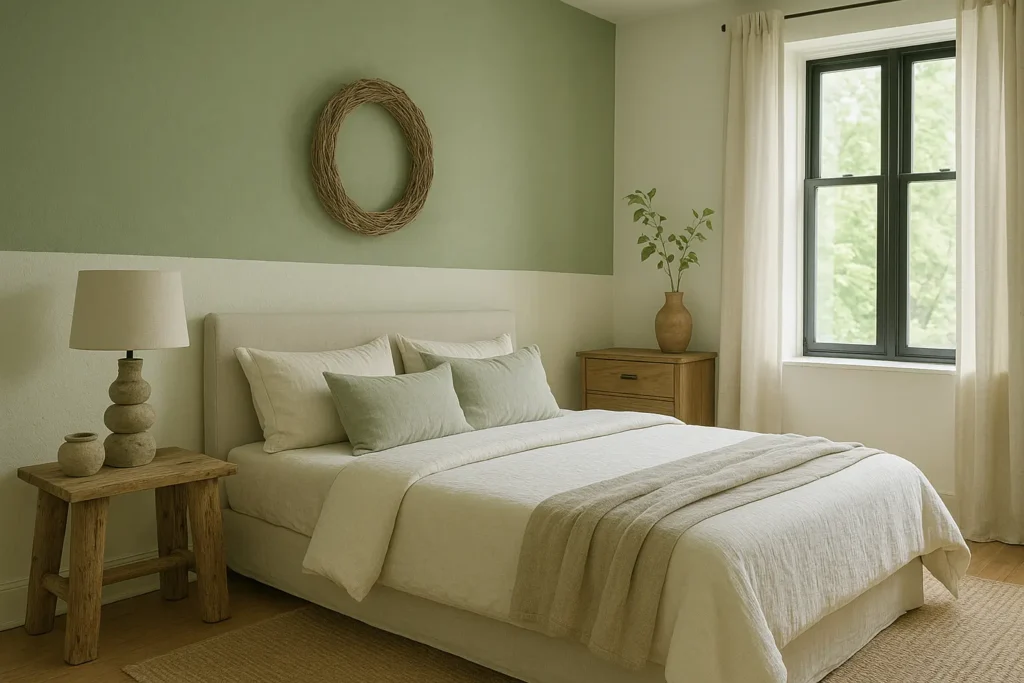
Sweetness and romance
The combination of pink and hemp beige creates a romantic atmosphere without falling into cliché. For a sophisticated adult bedroom, opt for a very desaturated, almost grayish powder pink for the headboard wall, accompanied by a warm beige for the other walls. This delicate combination envelops the room in a comforting softness.
Dynamism and brightness
The yellow and white duo instantly brings energy and optimism to your bedroom. To avoid an overstimulating effect, opt for a straw yellow or soft ochre rather than a bright yellow. This combination works wonderfully in dimly lit bedrooms, creating the illusion of a space bathed in sunlight even on gray days.
Techniques and practical advice for successful painting
For a perfect application of your two colors, carefully prepare your walls with filler if necessary, followed by light sanding and dusting. Applying a universal primer ensures a consistent finish, especially if you're going from a dark to a light color.
The association Paint and wallpaper create striking effects in an adult bedroom. Imagine a botanical patterned wallpaper on the headboard wall, accompanied by a soft green paint on the other walls – the effect is immediate and full of character. For the patterns, the plants of Art Deco style or subtle geometric shapes work particularly well.
If you'd like a more creative approach, try geometric painting by marking off areas with masking tape. A colored triangle behind the bed or a colorful diagonal instantly energizes the space. Remember that in a bedroom, a maximum of three different colors is enough to avoid visual overload and maintain the harmony necessary for rest.
